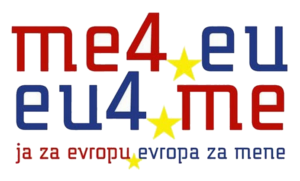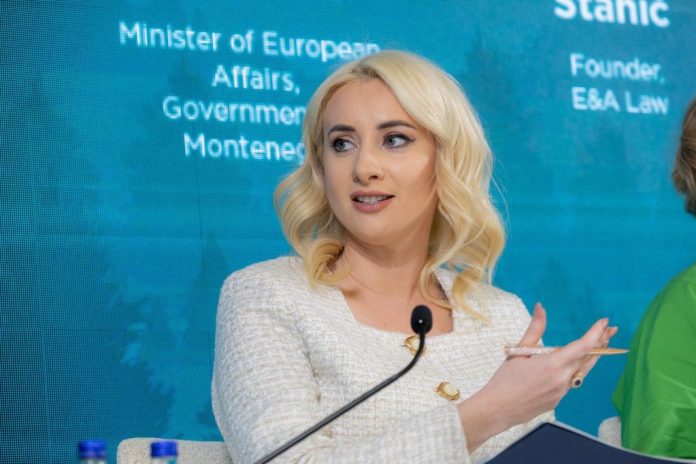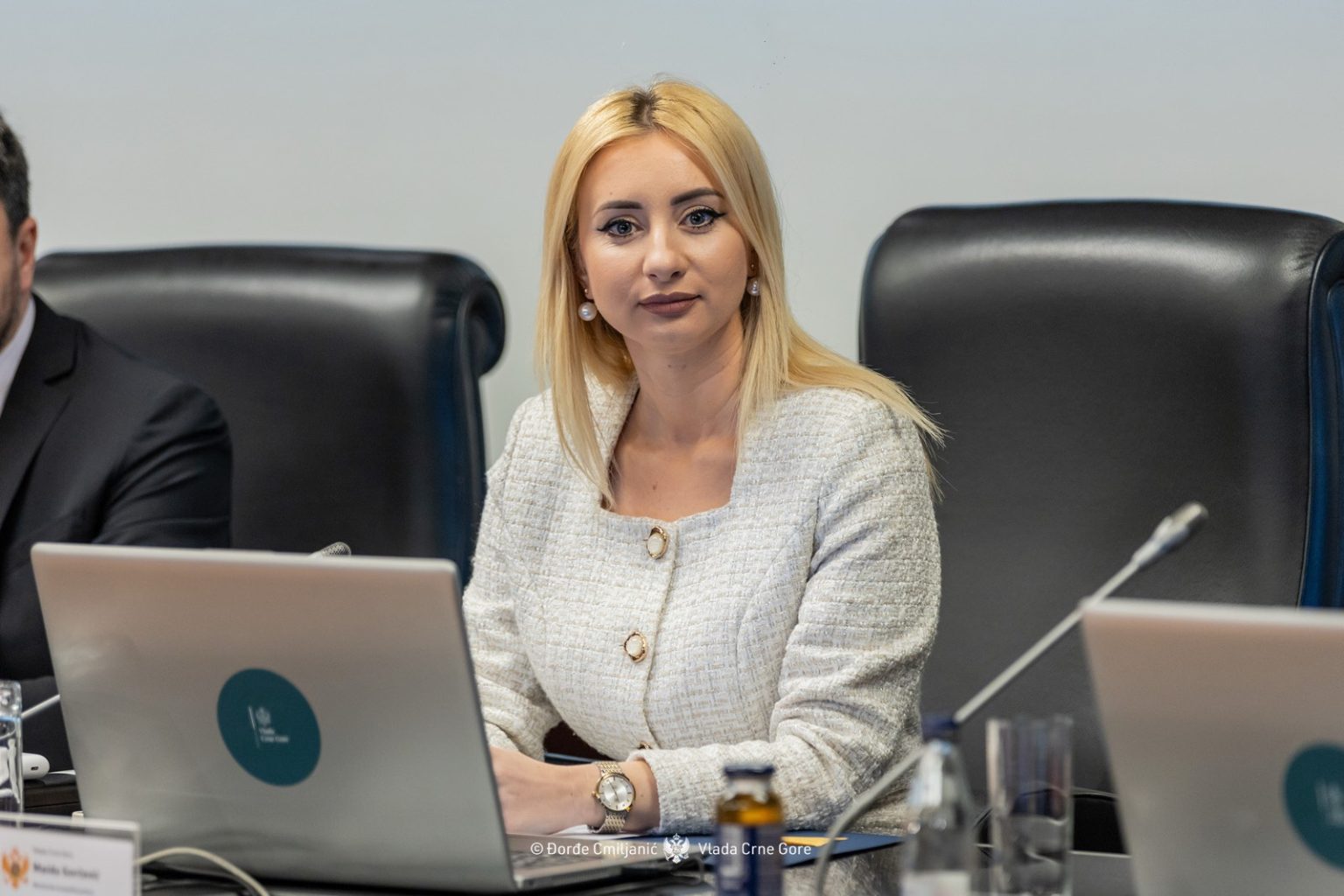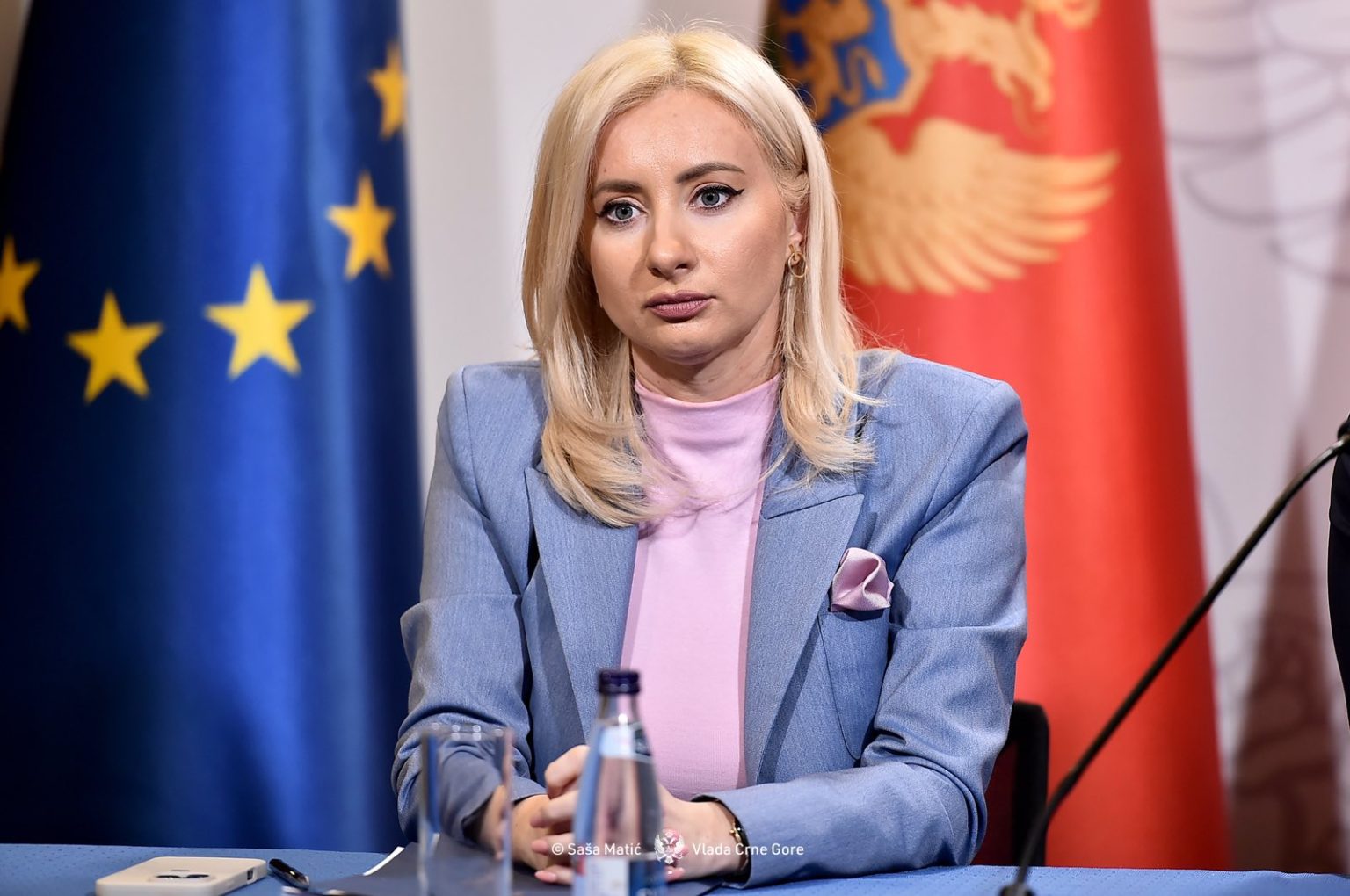The agreement with the United Arab Emirates (UAE) does not eliminate market competition, but instead enables parallel models of development – especially when it comes to complex and high-risk projects that often do not attract interest from EU investors.
This was stated in an interview for Bankar by the Minister of European Affairs, Maida Gorčević, in response to the question of whether the Emirates received privileged treatment that could conflict with Montenegro’s obligations under EU market competition rules, and whether these agreements could jeopardize the country’s EU path.
“Such an agreement will not only fail to jeopardize EU accession, but investments from the UAE can contribute to the functionality of the market economy – a key criterion for EU membership – and additionally increase employment and public revenues, which in the long run can strengthen Montenegro’s negotiating position and accelerate convergence with EU economies,” said Gorčević.
She added that such bilateral agreements are used within the EU to attract capital in areas not adequately covered by standard market mechanisms.
“Agreements with third countries are a legitimate right of every sovereign state until it becomes a full EU member. What’s crucial is that they are transparent, do not violate fundamental human rights, and do not create closed, discriminatory regimes – and this agreement does not create any of those problems,” said Gorčević.
She reminded that, in this context, trade negotiations between the EU and the UAE began last week, aimed at reaching a special trade arrangement – which supports the rationale behind the Government’s and Parliament’s decision to valorize national resources through economic cooperation with this Gulf country.
In the interview, Minister Maida Gorčević spoke about the impact of European integration on Montenegro, the importance of the EU and IPA funds, the concept of a “Geopolitical Union,” as well as her personal contribution and the work of the Ministry of European Affairs, which she heads.
How can European integration concretely help the underdeveloped northern region?
European integration opens numerous opportunities for the northern region through access to significant EU funds for infrastructure development, modernization, and support for the local economy. Gradual alignment with European rules will create a more stable legal framework, which increases investor confidence and opens space for investments in sectors such as tourism, green energy, agriculture, and food processing.
Through targeted investments and programs like IPARD, the north can activate its underutilized resources and stop decades-long migration. By strengthening institutions, local communities will be empowered to independently plan and implement projects that match their needs. In short, European integration is an opportunity for more balanced national development and for creating a sustainable perspective for the citizens of the north.
By joining the EU, we become part of the single market, which allows for the free movement of capital and easier access to European funds. This will accelerate the development of local projects, including the construction of transport and digital infrastructure, the improvement of the education system, and the encouragement of employment—especially for youth and women.
Which projects are currently being implemented with funding from IPA funds, and what impact will they have on the local economy?
We are currently in the implementation phase of numerous projects funded through the IPA III financial framework, which covers the period from 2021 to 2027. Within this framework alone, over €305 million has been allocated so far. These funds are designated for ten specific projects, three budget supports, as well as additional resources for operational programs in employment and environmental protection, agricultural support through the IPARD III program, and one of the largest investments – the construction of the Mateševo–Andrijevica highway section, for which €100 million has been secured.
What is especially important is that all of these projects have a very concrete and direct impact on the local economy. New jobs are being created, infrastructure is being modernized, and public services are being improved. The highway, for instance, will significantly improve connectivity in the northern part of the country, meaning better access to markets, more opportunities for local businesses, incoming investors, and a boost to tourism. These are changes people can feel in their everyday lives – and that is, ultimately, the point of European funds.
The European Union recently transferred nearly €27 million to Montenegro under the Growth Plan, and a total of €383 million is expected over the next two years. Can you specify which concrete reforms will be financed with these funds and how citizens will feel the direct benefits? How will this affect infrastructure development in Montenegro?
In the first tranche, about €12.5 million is in the form of budget support, while the rest is intended for three major infrastructure projects in the energy sector, implemented through the Western Balkans Investment Framework (WBIF). These include the improvement of the electricity network – such as the construction of a transmission line between Herceg Novi and Vilusi, modernization of substations, the introduction of a SCADA system for better control of the distribution network, and the construction of the large Brezna substation.
These investments are important because they directly contribute to a better and more stable electricity supply, reduce losses, and increase energy security – especially in municipalities in the north and southwest of Montenegro, where citizens most frequently suffer the consequences of outdated infrastructure.
As for the broader picture, funds from the Growth Plan will also be directed toward reform measures that will accelerate the digitalization of public administration, improve the education system, facilitate business start-ups, and enhance the labor market. Our goal is for every reform measure to have a concrete result – for example, for citizens to obtain documents more quickly and easily, for young people to find jobs more easily, or for entrepreneurs to have simpler procedures. In short – for the European path to become visible and tangible through everyday improvements.
By 2027, Montenegro has the opportunity to receive up to €383 million from the Reform and Growth Instrument for the Western Balkans, in exchange for progress in reforms in the areas of the rule of law and fundamental rights, renewable energy, the digital economy, human capital, and private sector development. Is there a realistic chance that Montenegro will meet the conditions to receive this money?
Yes, I believe there is a realistic chance that Montenegro will meet the conditions and make use of the €383 million available from the Reform and Growth Instrument for the Western Balkans by 2027. The key lies in the fact that the Reform Agenda for the Growth Plan is aligned with the obligations from the negotiation process that the Government plans to complete by the end of 2026. We are fully aware of how important this support is—not only financially, but also as an opportunity for comprehensive modernization of our society.
The Reform Agenda is our roadmap—precise, concrete, and measurable. It covers key areas: the rule of law, green energy, digital economy, human capital, and private sector development. These are not abstract topics—they are things that directly affect every citizen’s life: better justice, higher-quality education, better wages, more secure energy, more investments, and more jobs.
What’s important to emphasize is that the payment system for these funds operates on a performance-based principle—the more we achieve, the more money we receive. That means there are no blocks if a particular measure isn’t completed on time; funds are disbursed proportionally, with the opportunity to fulfill remaining measures later. And the obligations we have—we defined them ourselves. There are 130 of them, and each ministry knows exactly what its tasks are.
I believe that with full political will and coordination, we will manage to implement them. This is a unique opportunity not just to draw significant funds, but to make a real transformation—for Montenegro to become a functional, modern, and truly European country in every sense of the word.
How does the Ministry monitor and ensure that European funds are spent transparently and efficiently?
The Ministry of European Affairs plays a key role in monitoring how European funds are spent—not just to ensure they are used correctly, but also that they deliver real results. Precise control mechanisms have been established, fully aligned with European standards. This means that every step—from project planning to implementation—is closely monitored.
Controls are conducted on multiple levels. We have internal procedures, but also independent audits and external monitoring carried out by specialized bodies. There are regular reports, field inspections, as well as digital tools that help us quickly identify any irregularities and respond in a timely manner.
Transparency is especially important to us. All information about how funds are being spent is publicly available because we want citizens and our European partners to have trust in the system. After all, we are talking about public money—and as a state, we have a responsibility to spend it wisely, responsibly, and in the interest of our citizens. And this isn’t just a matter of procedures—it’s also about our credibility as a future EU member.
How much funding has Montenegro received from pre-accession funds (IPA) so far, and how do you assess its utilization?
Since Montenegro began using EU funds through the IPA instrument—starting in 2007 and through to the end of 2024—a total of €789 million has been allocated to us. These funds have been invested in development, institutions, infrastructure, education, employment, and energy. We’ve accessed them through three seven-year financial frameworks: IPA I (2007–2013), IPA II (2014–2020), and IPA III (2021–2027).
In the first phase, IPA I, we drew around €205 million and implemented over 100 projects—ranging from support to public administration and judiciary reform to local infrastructure development. Under IPA II, which lasted until 2020, €279 million was allocated. These funds were used to implement 33 projects and three direct budget supports, as well as to prepare major infrastructure projects through the Western Balkans Investment Framework.
We are currently in the IPA III phase, which runs until 2027, and over €305 million has already been allocated. It’s important to note that the funds from the Growth Plan, which are now being implemented, are additional and not included in this figure.
When we look at the overall picture, we can say that Montenegro has made very good use of the available funds—especially when compared with other countries in the region. Of course, there’s always room for improvement, particularly in terms of efficiency and speed of implementation. But what matters most is that we have a clear system, experience, and the will to turn every euro of EU investment into tangible benefits for our citizens.
How much EU funding has Montenegro failed to absorb in the past five years (roughly), and what are the most common reasons for that? In which areas could Montenegrin citizens benefit more from IPA and EU funds but currently do not?
The contracting of projects from the current IPA III financial perspective (2021–2027) is still ongoing, so we cannot speak precisely about funds we have failed to absorb. For instance, the deadline for contracting projects under IPA 2021 runs until December 2025—so there is still time to implement the planned activities.
At present, Montenegro is implementing projects from four annual IPA programs—2021, 2022, 2023, and 2024—for which the European Commission has allocated over €131 million. These funds support 10 concrete actions and three important budget support packages focused on public administration reform, border management, and energy crisis mitigation.
In addition, there are two major operational programs for the 2024–2027 period in the fields of environment and employment, with another €66 million in EU grants. Simultaneously, the IPA 2025–2027 program is being finalized, with an indicative €45 million earmarked by the European Commission. Its adoption is expected during 2025. Also worth mentioning is IPARD III—nearly €82 million for Montenegrin agriculture, of which €63 million is non-repayable EU aid. Furthermore, in July 2024, a €100 million grant from IPA III funds was approved under the Economic and Investment Plan for the Western Balkans to support the construction of the Mateševo–Andrijevica section of the Bar–Boljare highway.
When it comes to areas where citizens could benefit more—the clear answer is agriculture. While there is considerable interest, there is still room for more people, especially small and medium-sized farmers, to apply and take advantage of IPARD support—particularly now that these funds have been significantly increased under IPA III. Additionally, there’s great potential in energy efficiency, digitalization, and youth employment—areas that are now seeing more EU funding.
In essence, the challenges in absorbing funds are mostly technical—such as inadequate project documentation, limited administrative capacity, or delays in preparation. That’s why we are strengthening the system and educating potential beneficiaries to ensure that Montenegro makes the most of every opportunity the EU funds provide.
What measures is the Ministry of European Affairs planning to take to increase EU fund absorption, especially considering the frequent challenges in administrative capacity and project readiness? What specifically are you doing to ensure that local governments and small businesses have better access to EU funds?
At the Ministry of European Affairs, we have a clear understanding of where the biggest challenges lie in using EU funds—most often it’s the lack of qualified staff, especially at the local level, and insufficiently well-prepared projects. That’s why we are focused on concrete measures to overcome those obstacles.
First and foremost, we regularly organize training for officials from state administration, local governments, NGOs, and the private sector. These are not just theoretical sessions—we conduct practical workshops covering project writing, budgeting, grant management, and all key EU procedures.
We’ve also introduced a network of national contact points—people available to assist anyone who wants to apply for funding. Whether it’s a municipality or a small entrepreneur, they can receive technical support and advice to prepare a solid project.
We encourage inter-institutional cooperation and pay special attention to local governments, because we want to ensure balanced development across all parts of Montenegro. We motivate them to work together and to partner with civil society and the private sector—so they can jointly apply for larger and more complex projects that deliver a stronger development impact.
We’re also working on digitalizing the process—introducing tools that allow for faster and easier communication with institutions, better tracking, and improved oversight of funds and projects. All of this shortens timelines and reduces errors.
Our goal is to create a functional and sustainable system that ensures better use of the available funds and promotes balanced development across Montenegro through EU projects. Fund absorption isn’t just a technical issue—it’s a development priority, which is why we’re working to provide support where it’s needed most.
Can Montenegro count on additional EU funding in the coming years, considering the new “Geopolitical Union” approach that promises stronger inclusion of the Western Balkans even before formal membership?
Absolutely. As the most advanced candidate in the EU enlargement process, Montenegro can expect additional support from EU funds in the coming years—not just through existing instruments, but also through new initiatives stemming from the “Geopolitical Union” concept. This new EU approach involves deeper integration of Western Balkan countries even before full membership—through concrete policies, access to the single market, and, importantly, additional financial assistance.
Montenegro, as the country that has progressed the furthest in accession negotiations, has the opportunity to take the lead in utilizing these new instruments. The European Commission has already demonstrated its intention to speed up integration and reward reforms with concrete funding through the Growth Plan for the Western Balkans—especially in sectors that bring the most benefit to citizens: rule of law, green transition, digital economy, human capital, and employment.
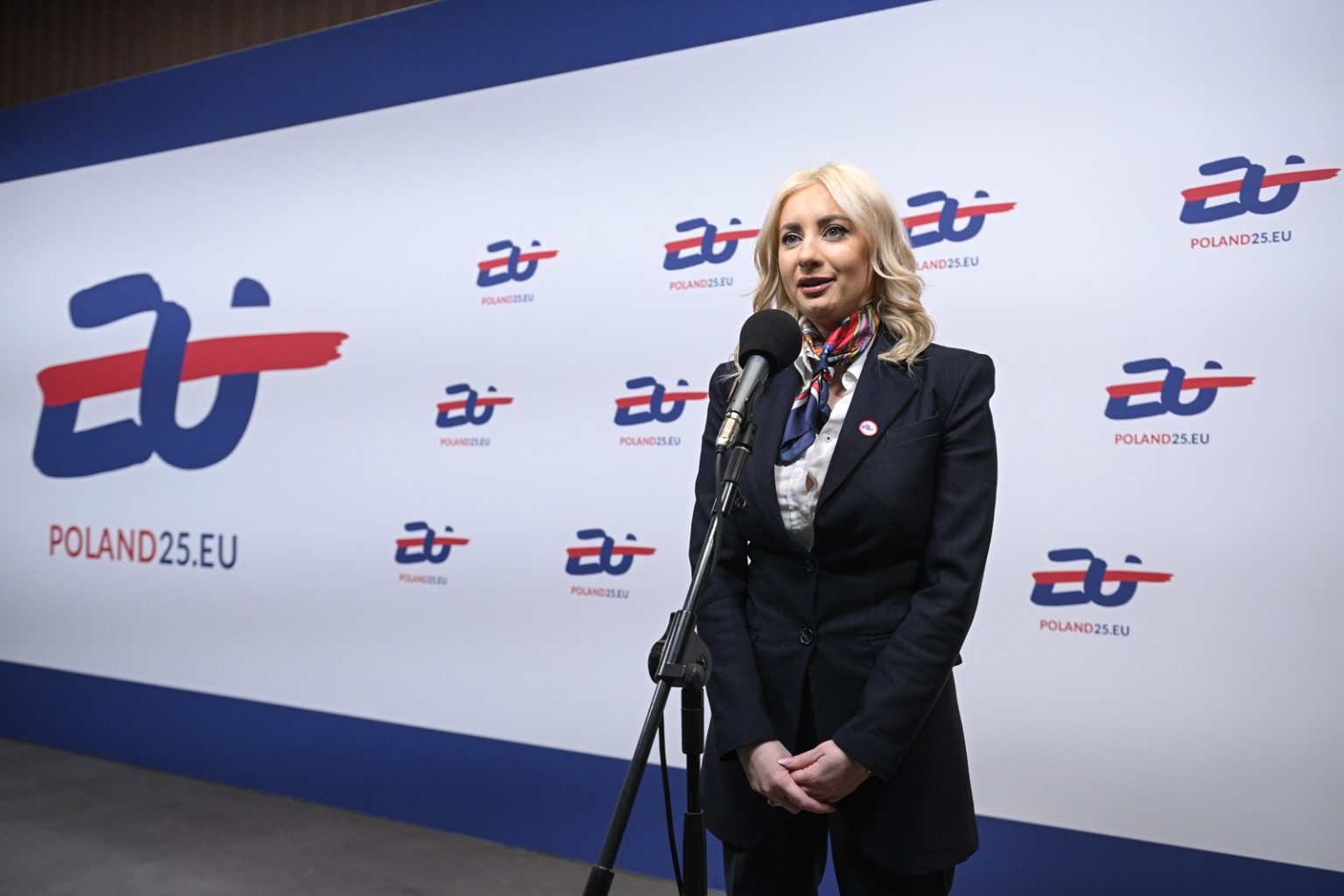
The Ministry of European Affairs is actively monitoring these processes and is already taking steps to ensure that Montenegro is ready to make full use of additional funds, whether through existing mechanisms such as IPA III or through new forms of support. We are also intensifying dialogue with EU institutions and regional partner countries to ensure that Montenegro is recognized as a credible and prepared partner within this new geopolitical framework.
Of course, access to these funds also depends on us – on how ready we are to implement reforms and effectively utilize the resources already available. That’s where the Ministry plays a key role – to ensure the system is prepared, and to encourage all stakeholders, from local governments to the private sector, to be part of the process.
How aligned is domestic legislation in the areas of competition, state aid, and public procurement with EU standards – and are domestic investors at a disadvantage because of this?
Montenegro has achieved a significant level of alignment with the EU acquis in the areas of competition, state aid, and public procurement. From a legislative standpoint, the framework is largely harmonized with EU standards, especially through the adoption of numerous new laws drafted in cooperation with European experts. However, legal alignment is only the first step – what is equally important is effective implementation in practice. This remains a challenge, particularly in terms of the capacities of institutions responsible for oversight and control.
That is why the Ministry of European Affairs, in cooperation with the Ministry of Finance and the Agency for Protection of Competition, is working to strengthen institutional capacities, increase transparency, and ensure timely communication with economic operators. In that regard, we are also preparing guidelines that will further raise awareness and facilitate the understanding of competition and state aid rules.
When it comes to domestic investors, the very goal of EU rules is to ensure equal conditions for all market participants – both domestic and foreign. In that sense, proper application of EU standards should not place domestic investors at a disadvantage, but rather create a fair and transparent market environment. The Ministry will continue to monitor progress and provide support to ensure full implementation of European rules, while safeguarding the competitiveness of the domestic economy.
Does the Ministry have projections on how much GDP, employment, or foreign investment could increase in the first five years of EU membership?
The Ministry is familiar with numerous studies on the economic convergence of new member states following EU accession. Countries such as Poland and Romania, which started from about 40–50% of the EU living standard, increased their level by around 11 percentage points within five years of membership, reaching 60–65%, despite the 2008/9 financial crisis. Montenegro is currently at a comparable level of development.
In addition, EU membership brings direct financial benefits. Gaining access to the European Structural and Investment (ESI) Funds enables Montenegro to implement projects with resources that, based on the experience of recent enlargement cycles, can be on average six to eight times higher than the annual allocations received during the pre-accession period. These ESI funds typically represent up to 4% of a recipient country’s GDP annually.
In Montenegro’s case, this funding will be used to implement key development projects across various sectors. Considering the multiplier effect of investment on GDP and overall economic growth, it is clear that such a significant influx of EU funding (combined with the broader benefits of membership across other negotiation chapters) will contribute to increased economic growth in the post-accession period. Experience from previous enlargement rounds suggests GDP could grow by up to five percentage points as a direct result of EU funds.
What do you consider your personal contribution and success during your term as Minister of European Affairs?
The right time to answer such a question will be at the end of my mandate, when I can reflect fully on what was planned and achieved. However, what I can already say is that I am sincerely committed to teamwork – because European integration is not the task of just one ministry or the government alone, but a shared responsibility of the entire society.
In this process, the Ministry of European Affairs – as the coordinator of accession negotiations – can only be successful if there is cooperation and a shared vision. That’s why I highly value the contribution of all colleagues at the Ministry, as well as those in other departments, with whom we work daily to build Montenegro’s European future. I believe in the power of joint effort and am proud to be part of a team that is moving forward with dedication toward a common goal.
We continue to work on achieving major, historic milestones for Montenegro’s EU integration – first and foremost, the completion of the negotiation process by the end of the coming year, and then creating the conditions for full EU membership by the end of 2028.
Our goal is to build Montenegro as a modern, prosperous, and well-governed country, fully aligned with the highest European standards – where EU integration brings real and tangible improvements to the quality of life of every citizen.
Source: bankar.me
